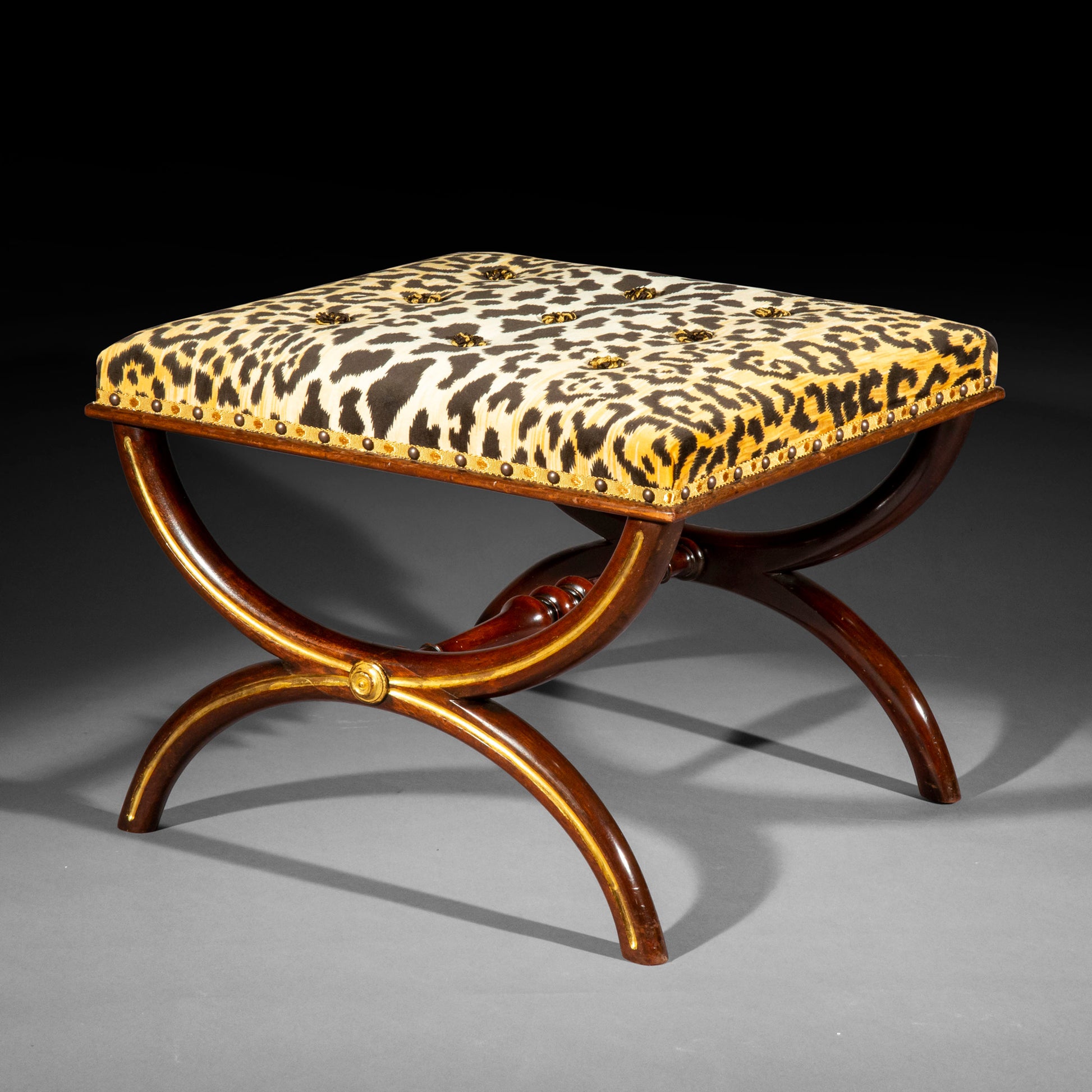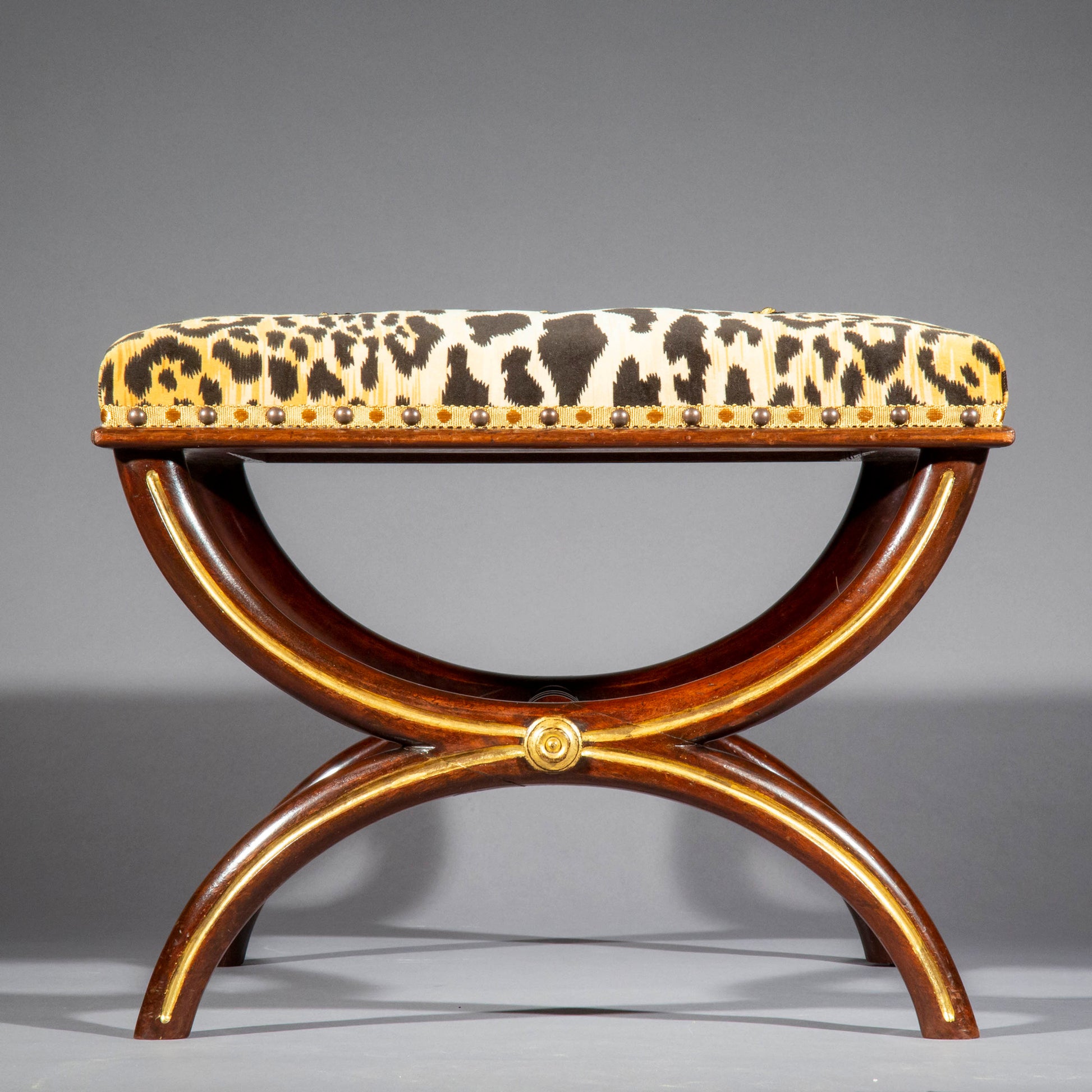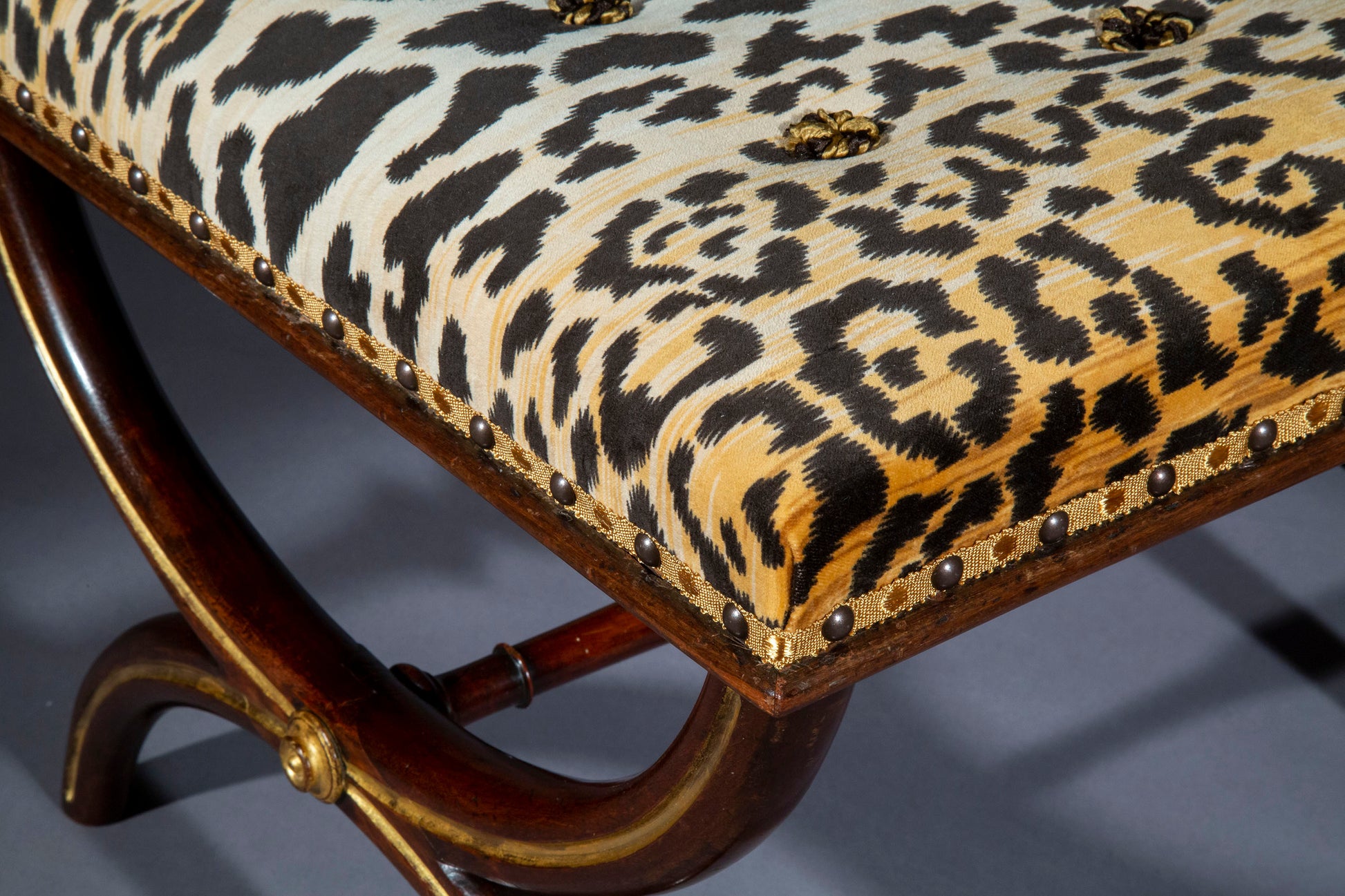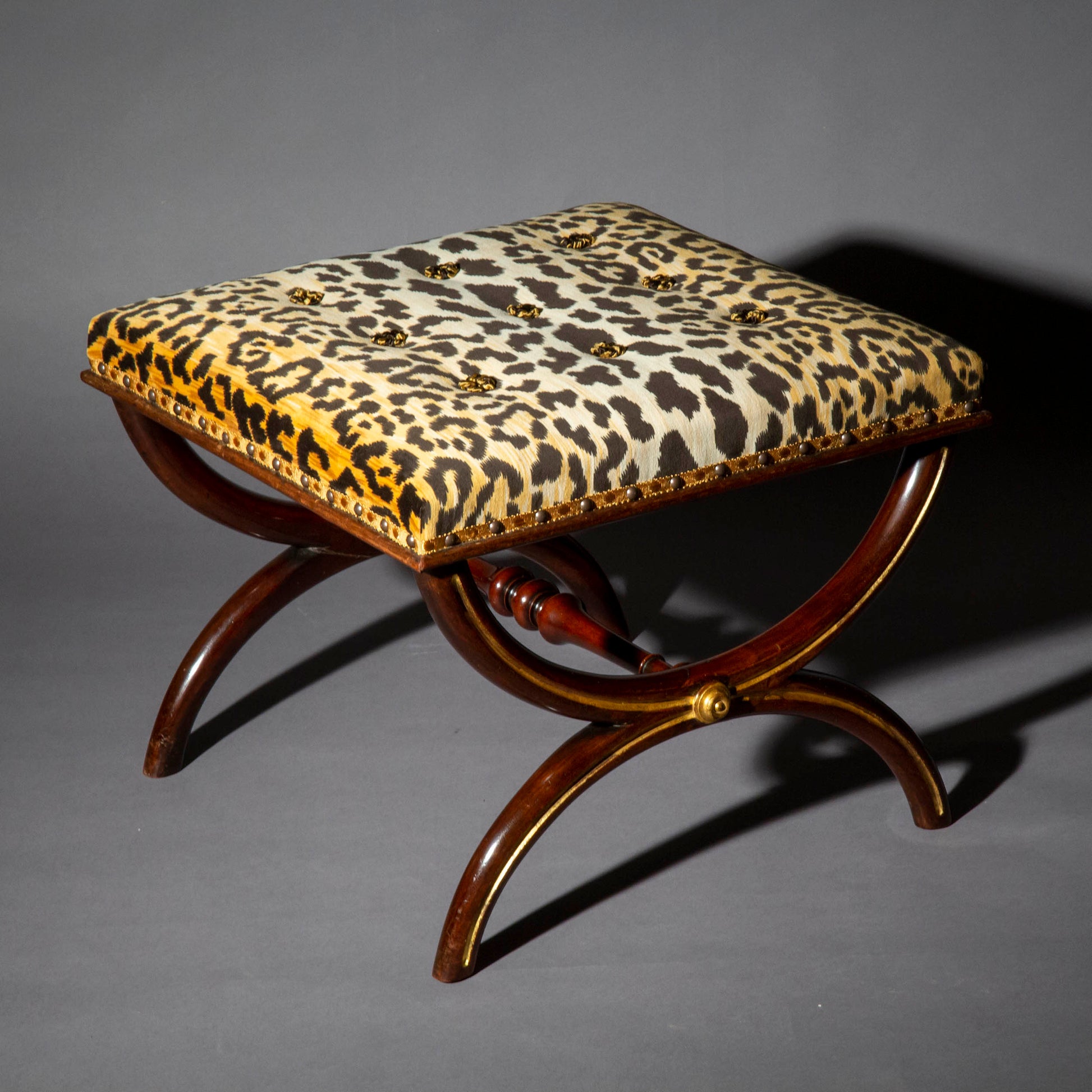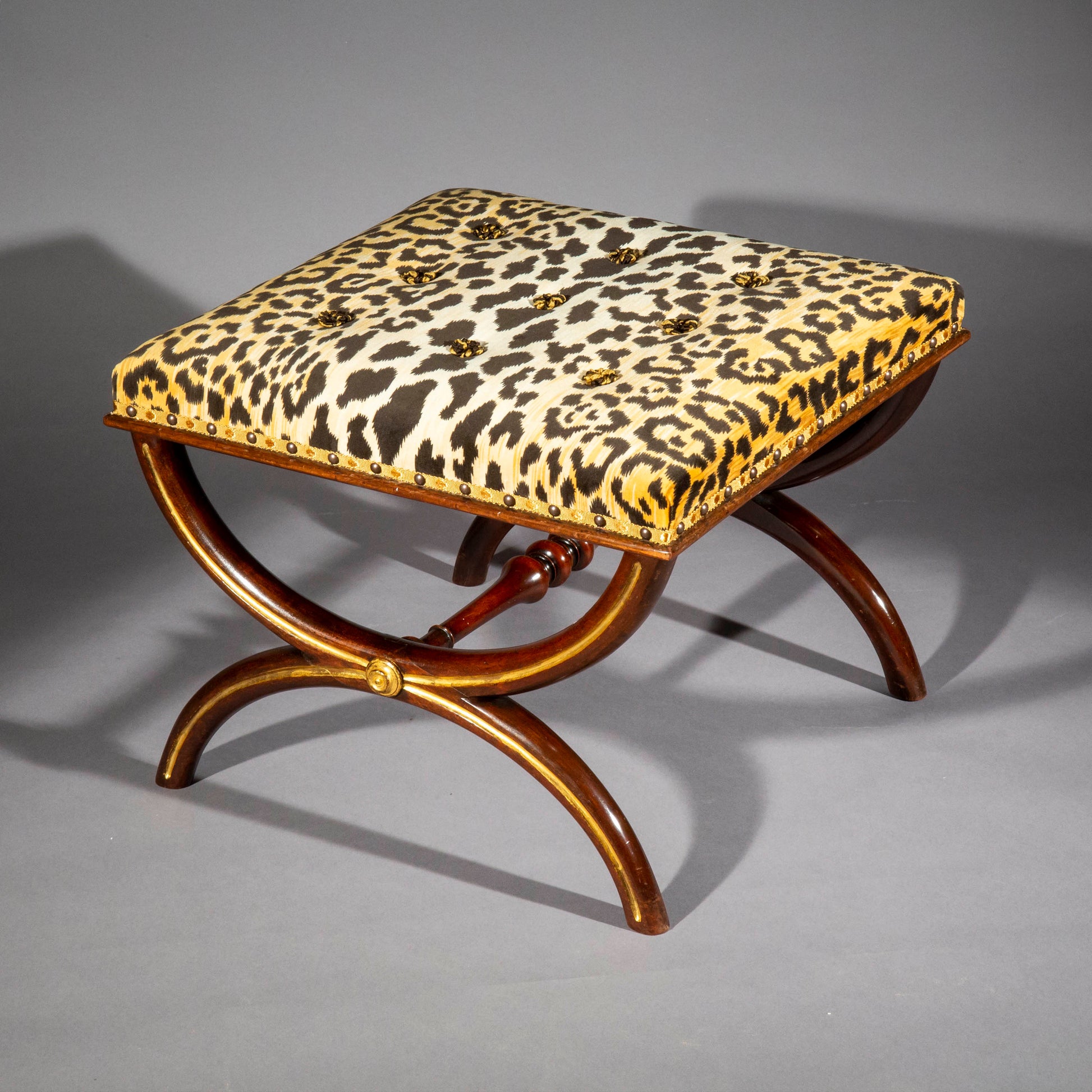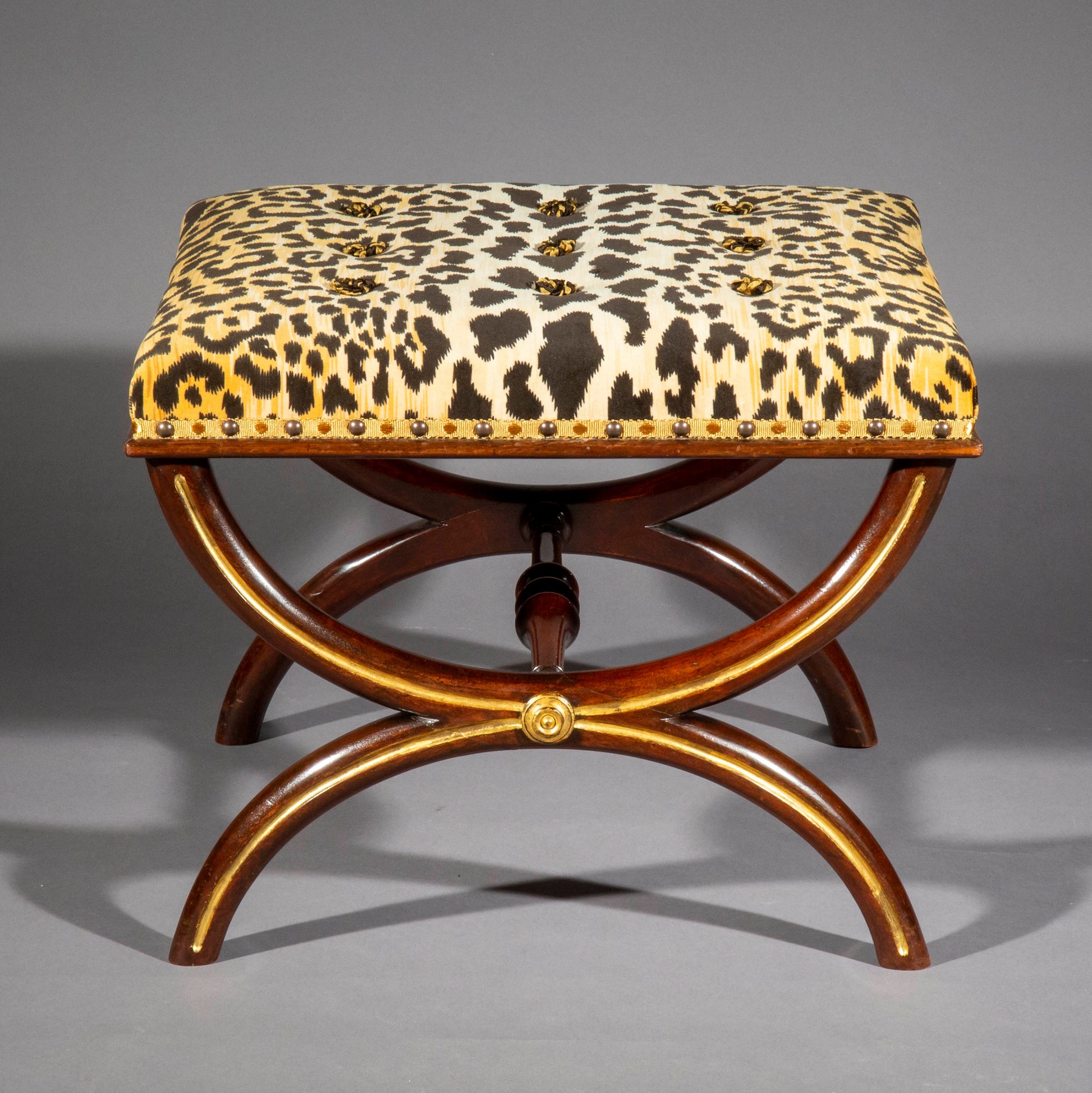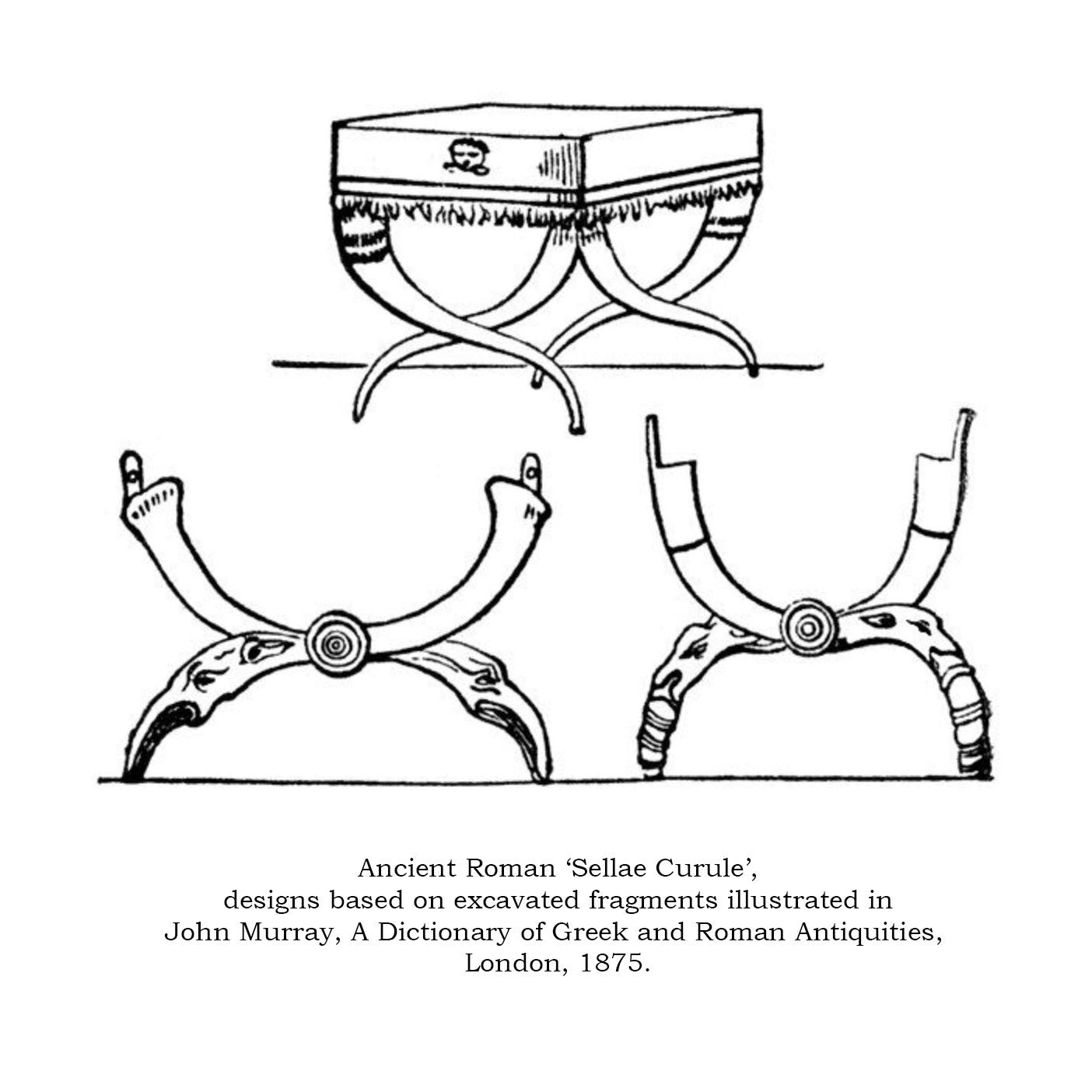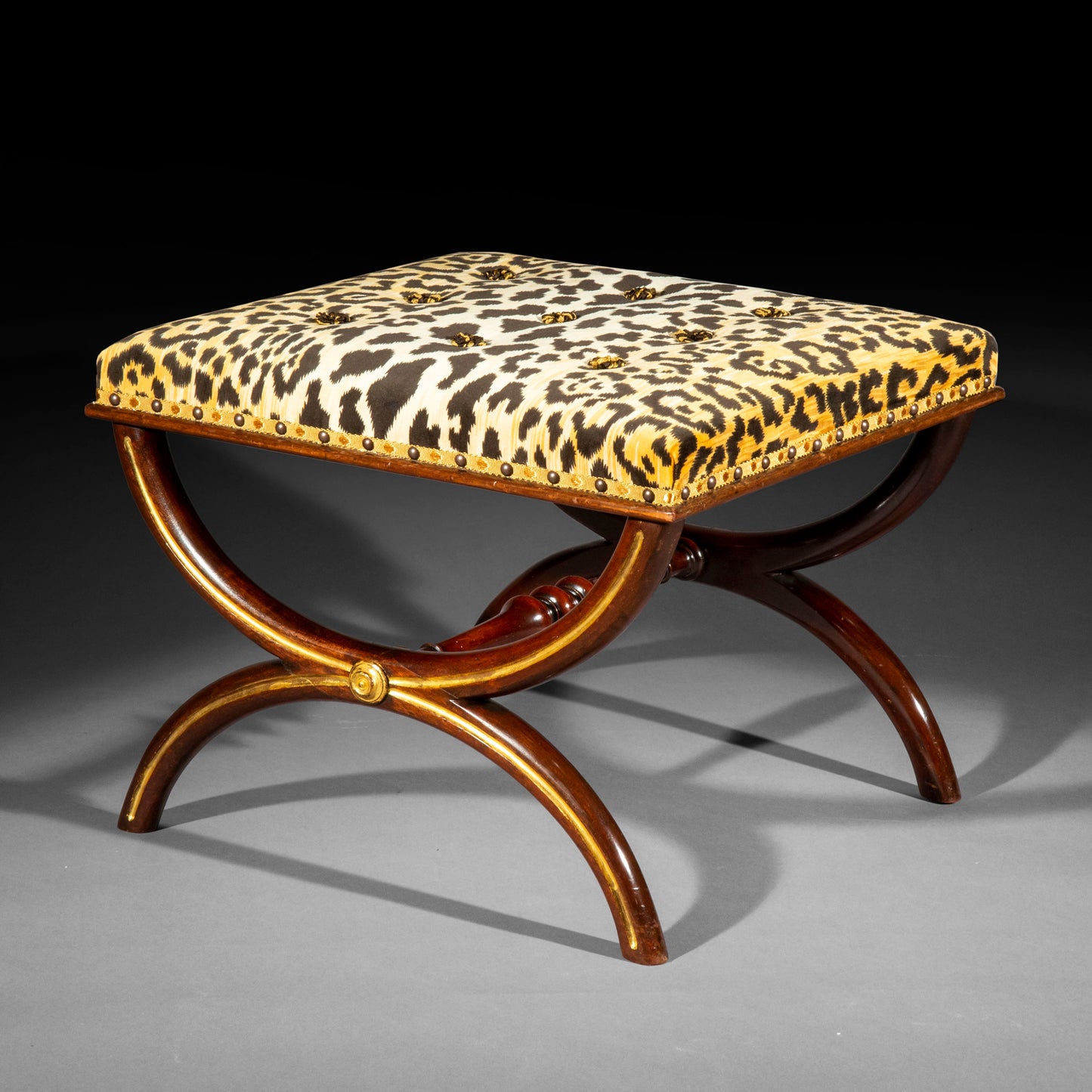

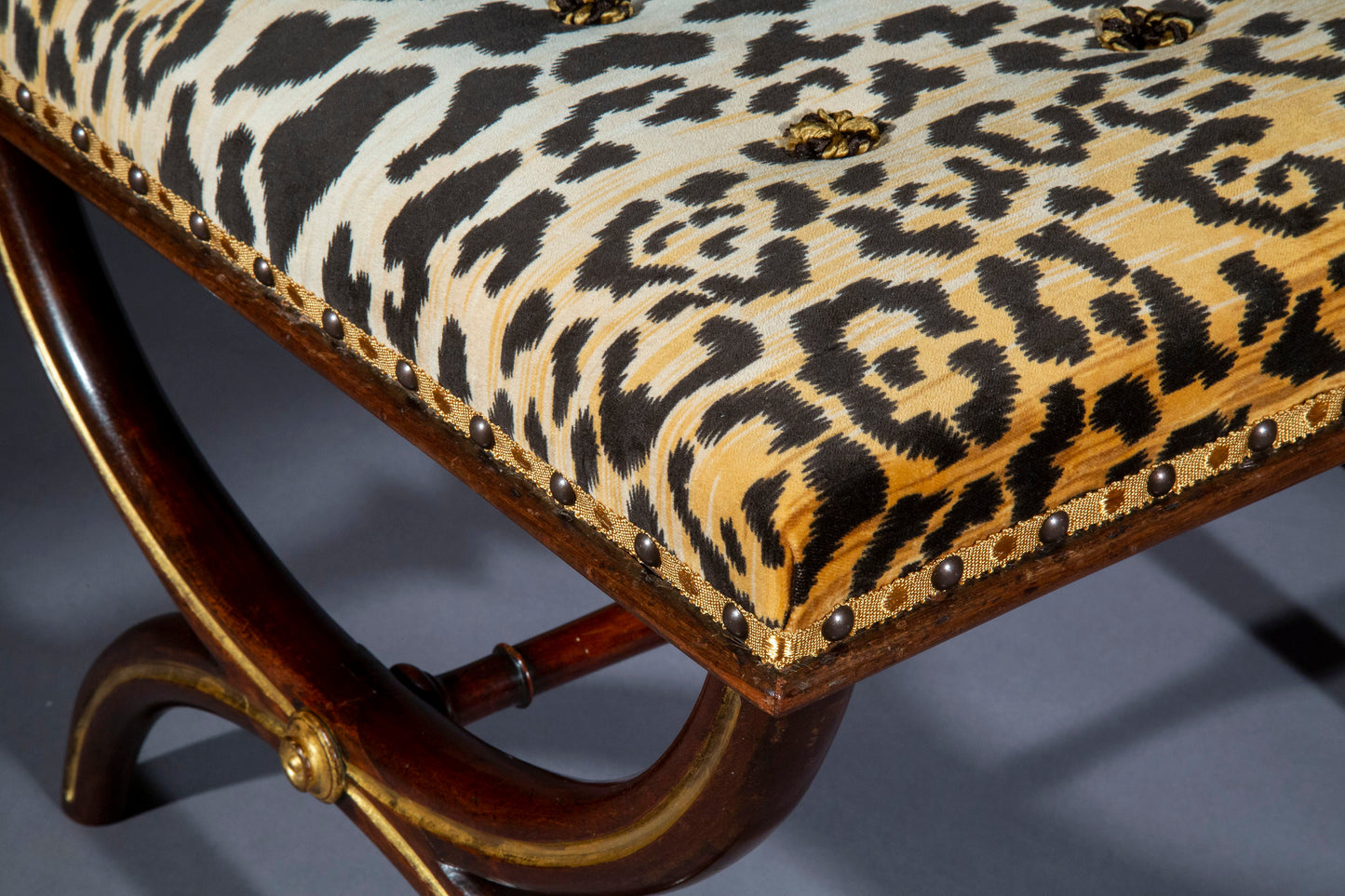
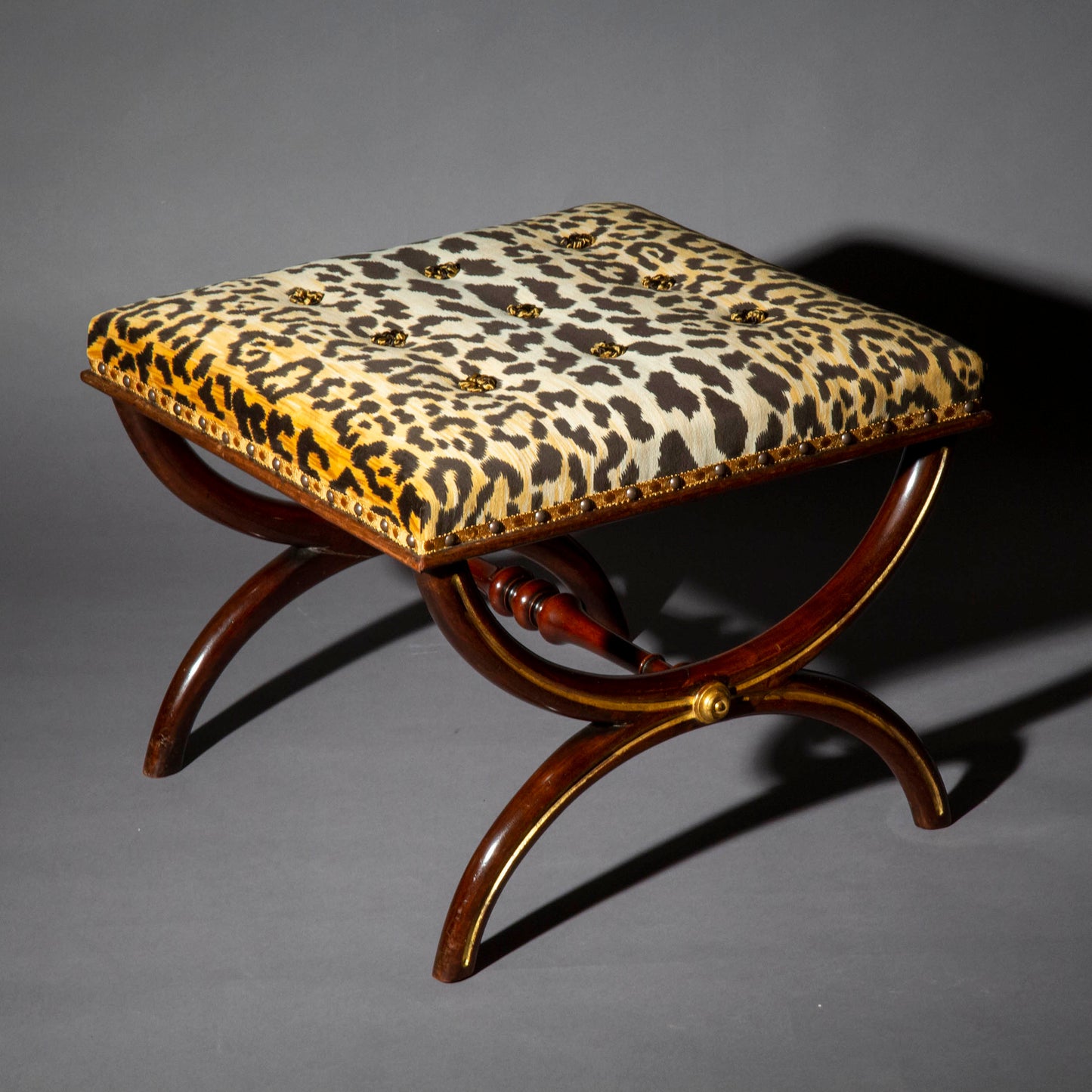
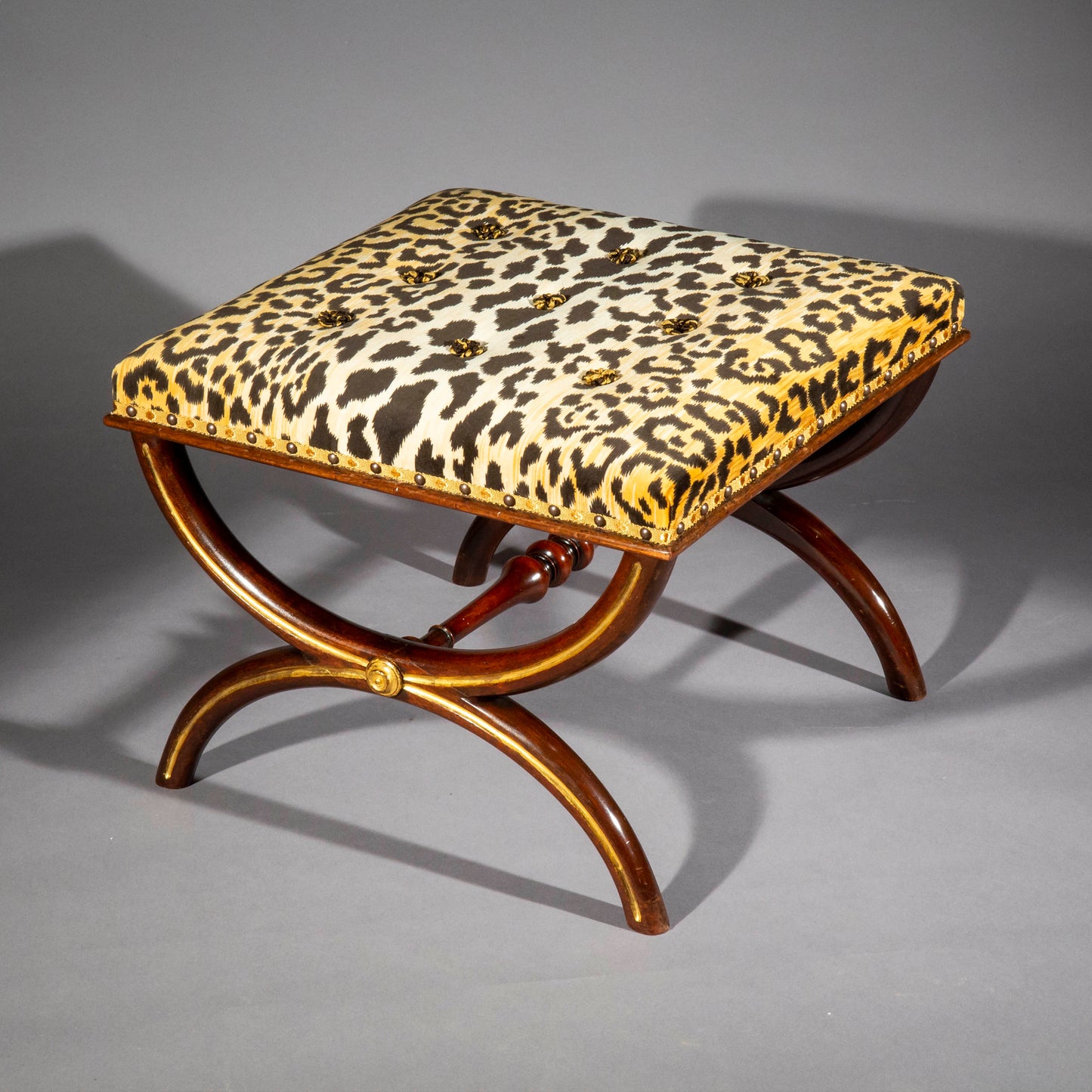

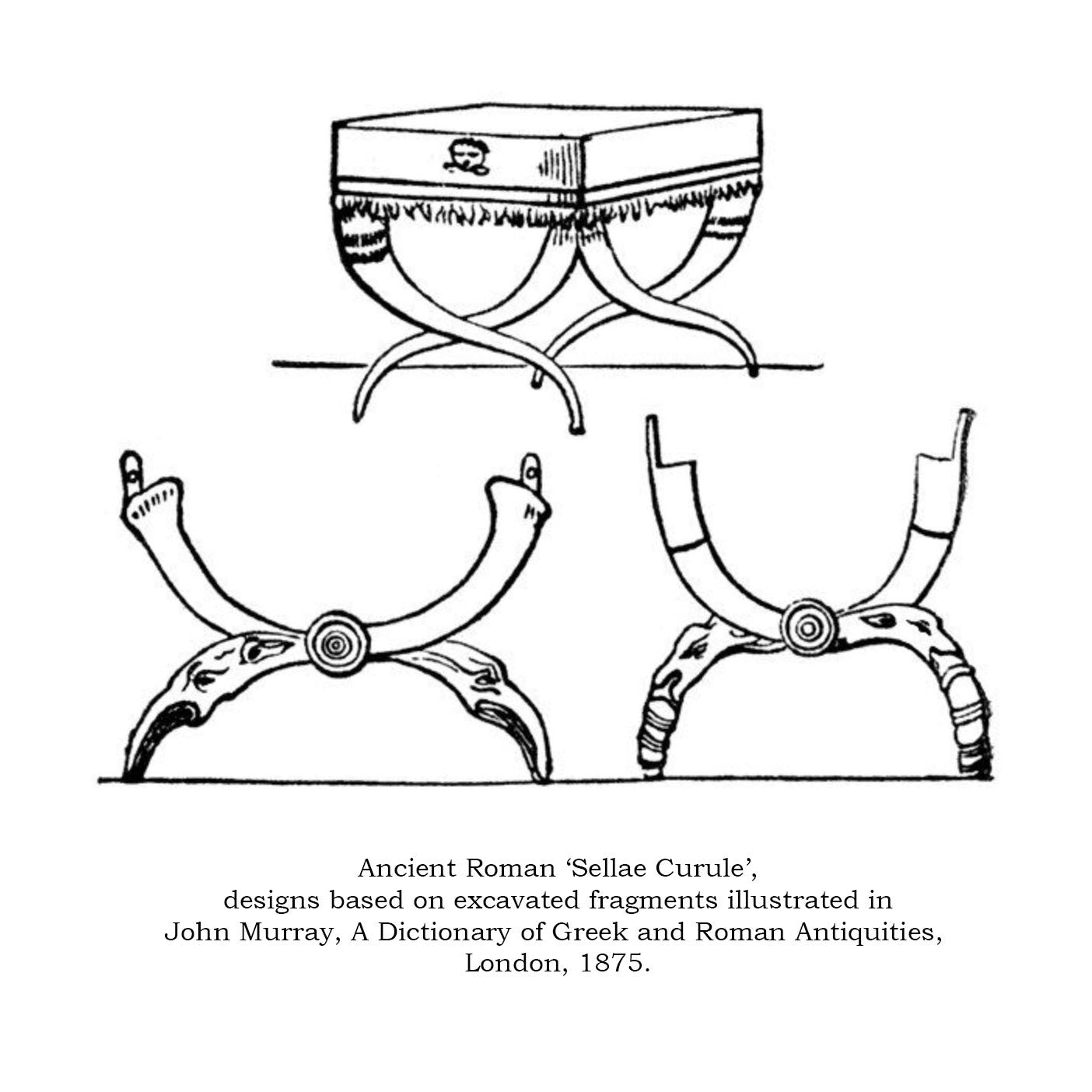
An elegant early 19th century parcel-gilt foot-stool of curule form.
Sella Curulis, the chair of state, is derived by the ancient writers from currus (chariot). The sella curulis is said to have been used at Rome from a very remote period as an emblem of kingly power, having been imported, along with various other insignia of royalty, from Etruria. However, much earlier stools supported on a cross-frame are known from the New Kingdom of Egypt. A related design, along with two other ancient fragments from the Museo Borbonico in Naples, Italy, is illustrated in John Murray, A Dictionary of Greek and Roman Antiquities, London, 1875, p.520.
The form found its way into stylish but non-royal decoration in the archaeological second phase of neoclassicism in the early 19th century.

